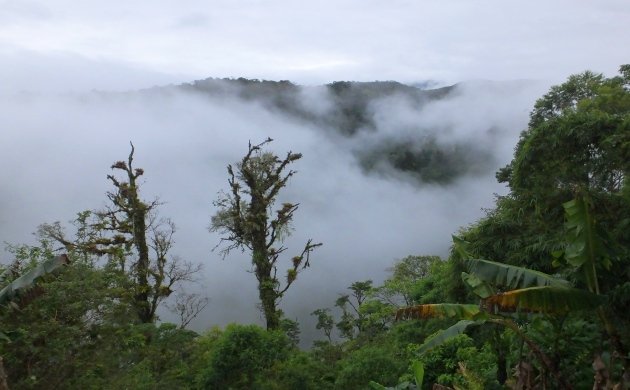
As birders, we face a particular set of challenges. Where can a birder find the best prices for quality optics? Which field guides to use, digital, paper, or both? How to get yourself out of bed on cold, dark, pre-dawn winter mornings, where to find the nearest landfill, how to convince officers of the law that you aren’t doing anything more than watching birds. We may also have the need to navigate through sewage ponds, try not freeze to death after falling into the Bering Sea, or even avoid being kidnapped by rebels. The list goes on, it just depends on what you are willing to do to see birds.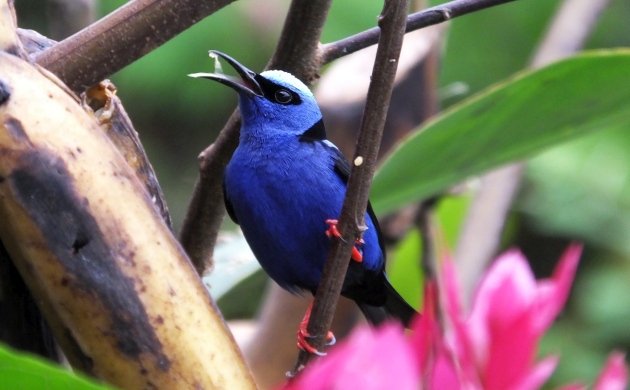
What would you do to see a fancy Red-legged Honeycreeper ?
Fortunately, for most of us birders, we don’t have to deal with the more trying and death defying barriers to enjoying all aspects of our hobby. Most of us realize that sometimes, the bird just isn’t worth the pain, cold, profuse sweating, or other not so fun happenings. For most of the birding community, difficulties come in the form of locating coffee at the relevant time (that could actually be all day long), getting to the right habitat, and just seeing the birds. However, there is also that one factor over which we don’t have any control and which can make or break any day of birding, anywhere. No, it’s not learning how quick one can identify and ignore feral Rock Pigeons (you may still need them on a Big Day after all), it’s that thing that people have been attempting to predict and rely upon since the days of dealing with dangerous Megafauna; the weather.
Mother Nature’s elements can sure throw a kink into a morning or even several days of birding. Some types of weather can be dealt with but for certain other forms of atmospheric anomalies, there’s just no hope. For example, as stubborn and hopelessly hopeful as one might be, there’s just no way you are going to see anything in a blizzard. Even if you did venture appropriately and fully equipped into the blowing snow and with a thermal imager to boot, you still won’t see anything. The same goes for tornadoes because unlike some of us birders carried away by the passion of birding, the birds themselves are far from lacking in common sense. They go and take cover because they don’t feel like risking being obliterated by gale force winds. The same goes for lighting storms accompanied by giant buckets of rain. But, not all weather is crazy and most of it can be birded, even during the rainy season in Costa Rica, you can actually see a lot! Here are some tips:
Waterproof optics
Although most birding binoculars in these modern times are waterproof, it’s still worth emphasizing this vital piece of information when birding in Costa Rica. It’s pretty humid up in here, if your binoculars have the slightest chance of fogging up, oh, they sure will and just when you are about to bring some beautiful tanager into focus. Remember to use fog and waterproof bins and no matter how much you paid for them, keep em as dry as you can!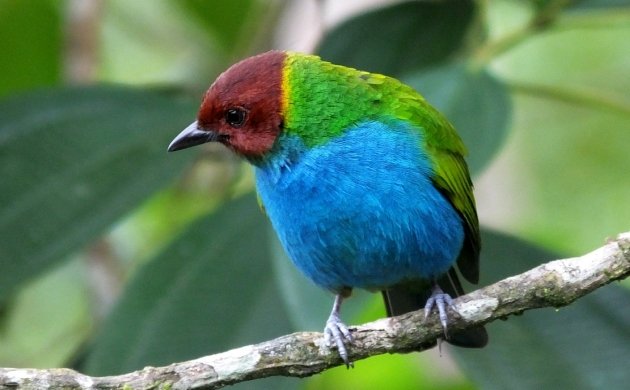
To avoid missing out on the colors of a Bay-headed Tanager for example.
Watch birds from cover, wait out the heavy rains
If it’s seriously raining, don’t bother trudging along some muddy trail. Whether dressed in a cheap blue poncho or sporting the latest in breathable waterproof gear, you are more likely to end up muttering to yourself about walking in the damn rain than seeing any birds. Get to cover, better yet, don’t even leave cover in the first place, and watch from under that roof. But keep watching! Don’t go and start the drinking or socializing or reading a book. Birds DO come out in the rain, maybe not as many, but quite a few can perch up in the trees and come out of the woods. Keep scanning the trees with a scope and just keep looking because when that rain lightens up, the birding can suddenly be very good.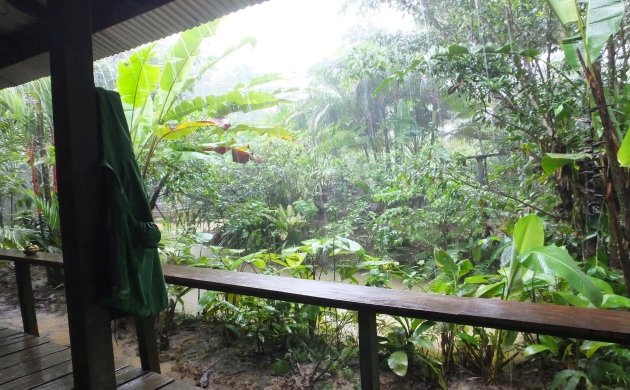
Waiting out the rains.
Birding in light rain
This is when the birding can be fantastic. During light rain, watch from cover or even take to a trail and get ready to be quick with the bins because the birds will make themselves known. Mixed flocks can get crazy, parrots start calling and flying overhead, a raptor can perch at the top of a tree. Stuff gets active and all at once and it can be much better than sunny weather, be ready!
The umbrella
Speaking of ponchos, although some people like them, I much prefer an umbrella. A small travel umbrella will work and you can often hold it and watch birds through bins at the same time. It’s also more comfortable than a humidity holding, uncouth plastic poncho.
Feeders
Feeding stations, both natural and otherwise, can be excellent during the rain. Light rain is best but some birds might still come to fruit and fruiting trees during downpours. Hummingbirds in particular can get very active during the rain. A feeder or flowering bushes and trees that are visible from a covered porch can produce a bonanza of bird activity in rainy weather.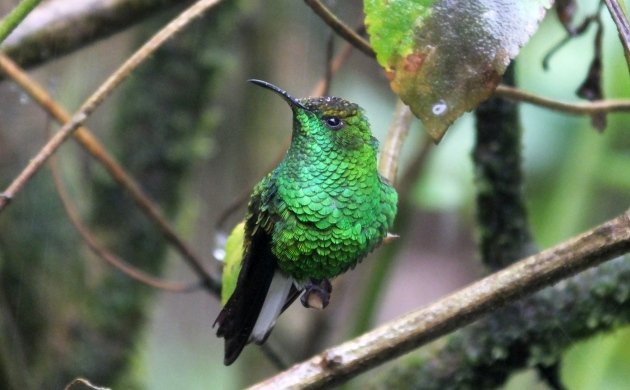
A sweet Coppery-headed Emerald in rainy weather.
Forget about the fog (and lightning too)
Yeah, if there is lightning and heavy rain, you won’t see anything. When the skies get that crazy, go for that drink, study a field guide, and catch up on lists. The same goes for the fog because attempting to identify silhouettes of potential lifers has to rank up there on the list of the most frustrating things that birders can face. If the fog lightens up though, just as with light rain, the bird activity can be excellent.
Finally, the most important thing to remember about birding in the rains of Costa Rica is that even though the dry season lasts from December to April, that doesn’t really mean that it won’t rain. It won’t in the dry forest zones of the northwestern part of the country and on much of the Pacific coast but forget about the mountains and northern and eastern Costa Rica. In those wet places, it can still rain whenever and wherever, just be ready for it and keep on birding!













One occasionally successful strategy in heavy rains: walk the trails at a fast pace, looking for ground-feeders – in the Neotropics, Quail-doves, Tinamous, Wood-quail, and Nightingale-thrushes can all come out on the trail and be a great deal more confiding than they usually are.
Very hit-or-miss (and more miss than hit), but when it works, it’s wonderful!